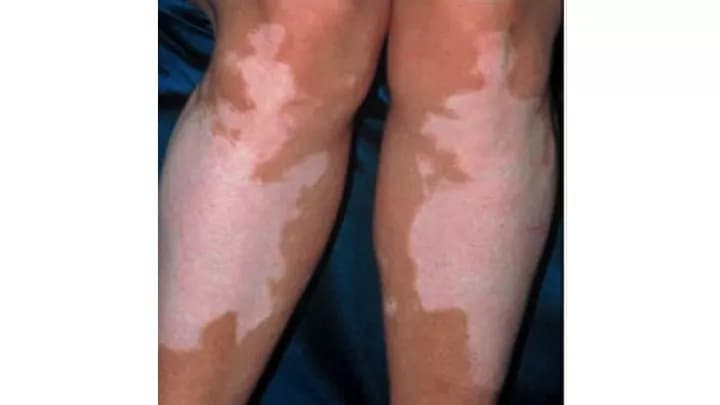A pair of molecular signals controls skin and hair color in mice and humans -- and could be targeted by new drugs to treat skin pigment disorders like vitiligo, according to a report by scientists at NYU Langone Medical Center.
Finding ways to activate these pathways, researchers say, could lead to therapies that repigment skin cells damaged in vitiligo, a disfiguring illness marked by the loss of skin pigmentation, leaving a blotchy, white appearance. The same pathways could serve as targets for drug therapies that repigment grayed hair cells for people seeking a younger look but who are allergic to cosmetic dyes. Such therapies might even one day reinforce pigment to correct discoloration around scars.
In experiments in mice and human cells, researchers found that control of these skin and early-stage hair cells, known as melanocyte stem cells, is regulated by cell-to-cell signaling reactions. These reactions are part of the endothelin receptor type B (EdnrB) and the Wnt signaling pathways.
Previous research had shown that endothelin proteins and the EdnrB pathway help control blood vessel development, as well as some aspects of cell growth and division, the scientists say. But they believe that their new findings, to be published in the journal Cell Reports online April 28, are the first evidence tying the signaling pathways to the routine growth of cells that produce pigment (melanocytes) and provide color to skin and hair.
They say the study is the first to outline the link between EdnrB and Wnt signaling, confirming that EdnrB coordinates the rapid reproduction of melanocyte stem cells.
"Our study results show that EdnrB signaling plays a critical role in growth and regeneration of certain pigmented skin and hair cells and that this pathway is dependent on a functioning Wnt pathway," says study senior investigator and cell biologist Mayumi Ito, PhD. Ito is an associate professor in the Ronald O. Perelman Department of Dermatology at NYU Langone and a member of NYU Langone's Helen L. and Martin S. Kimmel Center for Stem Cell Biology.
Among the study's key findings, Ito reports, was that mice bred to be deficient in the EdnrB pathway experienced premature graying of their fur.
Study co-lead investigator and postdoctoral fellow Wendy Lee, PhD, says the pathway's involvement in determination of hair color was "clearly evident" in the mice when she first examined them.
In further experiments in mice, stimulating the EdnrB pathway resulted in a 15-fold increase in melanocyte stem cell pigment production within two months, producing what Ito calls "hyperpigmentation." Wounded skin in normally white mice became dark upon healing.
In the latest study, Ito and her team found that blocking Wnt signaling stalled stem cell growth and the maturing of stem cells into normally functioning melanocytes, even when endothelin proteins were present. This led to mice with unpigmented grayish coats.
Ito says her team plans further investigations into how other cell repair and signaling pathways interact with EdnrB and melanocyte stem cells.
According to the National Institute of Arthritis and Musculoskeletal and Skin Diseases, vitiligo occurs in about 1 percent of people worldwide.
The above post is reprinted from materials provided by NYU Langone Medical Center / New York University School of Medicine. Note: Materials may be edited for content and length.
Disclaimer: DoveMed is not responsible for the adapted accuracy of news releases posted to DoveMed by contributing universities and institutions.
Primary Resource:
Takeo, M., Lee, W., Rabbani, P., Sun, Q., Hu, H., Lim, C. H., ... & Ito, M. (2016). EdnrB Governs Regenerative Response of Melanocyte Stem Cells by Crosstalk with Wnt Signaling. Cell reports, 15(6), 1291-1302.
Related Articles
Test Your Knowledge
Asked by users
Related Centers
Related Specialties
Related Physicians
Related Procedures
Related Resources
Join DoveHubs
and connect with fellow professionals


0 Comments
Please log in to post a comment.